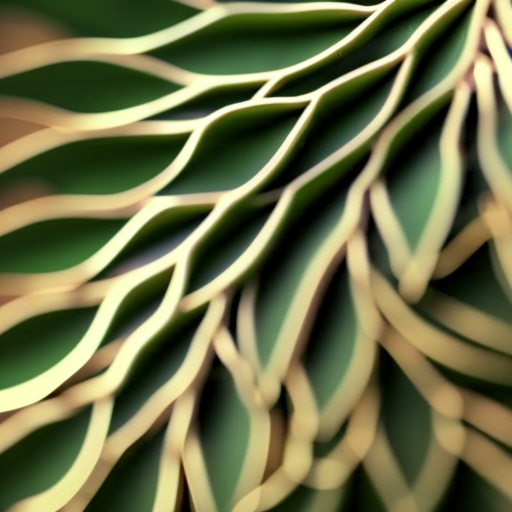
Cannabis sativa, commonly known as cannabis, features a unique structural characteristic that plays a pivotal role in its biochemical profile and interaction with the environment: the trichome. These microscopic, mushroom-shaped appendages are primarily located on the leaves and flowers of the cannabis plant. They are critical to the synthesis and storage of various phytochemicals, including cannabinoids, terpenes, and flavonoids, which collectively contribute to the organoleptic properties and therapeutic effects of cannabis.
Trichomes serve as the primary reservoirs for the majority of the cannabis plant’s phytocannabinoids, including delta-9-tetrahydrocannabinol (THC) and cannabidiol (CBD). Research suggests that up to 90% of total THC may be located within these structures, making them a focal point in the study of cannabis pharmacology. The structure of a trichome consists of a stalk and a glandular head, where the secretion of resin occurs. This resin is composed of a complex amalgamation of cannabinoids and terpenes, which are synthesized within the trichomes as secondary metabolites.
Recent studies, including those conducted by researchers at the University of British Columbia (UBC), have utilized ultraviolet (UV) light to investigate trichome morphology and maturity. Their findings revealed that, upon exposure to UV light, stalked trichomes emitted a distinctive blue hue, indicative of the high concentrations of THC and other metabolites they contain. Furthermore, these metabolites, while essential for the plant’s defense and appeal, could potentially be cytotoxic, prompting inquiries into the cellular mechanisms that allow trichomes to store such compounds without incurring damage.
The production of cannabinoids within trichomes is a complex process influenced by genetic, environmental, and developmental factors. The biosynthetic pathways for cannabinoids begin with the precursor olivetolic acid and geranyl pyrophosphate, which converge to form cannabigerolic acid (CBGA). Subsequently, enzymatic reactions convert CBGA into the various cannabinoids we recognize, including THCA and CBDA. This process is crucial not only for the psychoactive effects attributed to THC but also for the therapeutic benefits associated with CBD and other minor cannabinoids like cannabinol (CBN) and cannabigerol (CBG).
In addition to cannabinoids, trichomes are integral to the biosynthesis of terpenes, which are the aromatic compounds that contribute to the distinctive scents and flavors of cannabis. These volatile compounds, such as myrcene, limonene, and pinene, are not merely decorative; they play a significant role in the entourage effect, potentially modulating the pharmacological effects of cannabinoids. The therapeutic implications of terpenes are gaining increasing recognition, as they may contribute to mood elevation, anxiety reduction, and other health benefits.
Flavonoids, another class of plant metabolites, are also produced within trichomes. These compounds provide pigmentation and possess antioxidant properties, further enhancing the plant’s defense mechanisms against environmental stressors and pathogens. Flavonoids can also exert health benefits in humans, contributing to the anti-inflammatory and antioxidant potential of cannabis when ingested.
Trichomes act as a formidable line of defense for the cannabis plant. Their bitter taste and sticky resin can deter herbivorous insects and larger animals from consuming the plant. This defensive role is crucial during the flowering stage, when the plant is most vulnerable to predation. By exuding a viscous, resinous substance, trichomes not only protect the plant from pests but also shield it from harmful UV radiation and other environmental stressors.
Recent advancements in microscopy have enabled researchers to identify three primary types of trichomes present on cannabis: bulbous, capitate-sessile, and capitate-stalked.
1. Bulbous Trichomes: These are the smallest and most ubiquitous trichomes, measuring approximately 10-15 micrometers in diameter. They are primarily responsible for the secretion of cannabis resin but are not visible to the naked eye.
2. Capitate-sessile Trichomes: Slightly larger, these trichomes measure around 20-30 micrometers and are typically found on the underside of leaves. They are vital in cannabinoid production but do not possess a stalk.
3. Capitate-stalked Trichomes: These are the most prominent and largest trichomes, measuring 50-100 micrometers. They are predominantly located on the flower surfaces and are crucial for cannabinoid and terpene synthesis. Their size and prominence make them key indicators for optimal harvest timing.
The maturation of trichomes can serve as an indicator for the optimal harvest time. As trichomes age, they transition from clear to cloudy and eventually to amber. Cultivators often seek to harvest when approximately 50-70% of trichomes are cloudy, as this stage typically corresponds to peak THC concentrations and desired psychoactive effects. Conversely, if trichomes become predominantly amber, the THC may begin to convert to CBN, which is associated with more sedative effects.
In conclusion, cannabis trichomes are not merely superficial structures; they are integral to the plant’s biosynthesis of cannabinoids, terpenes, and flavonoids, while also serving an essential defensive role. Understanding the intricacies of trichome development and functionality is vital for both cultivators and consumers seeking to maximize the therapeutic potential of cannabis. Thus, trichomes epitomize the intersection of plant biology and pharmacology, providing profound insights into the complex nature of this multifaceted plant.

